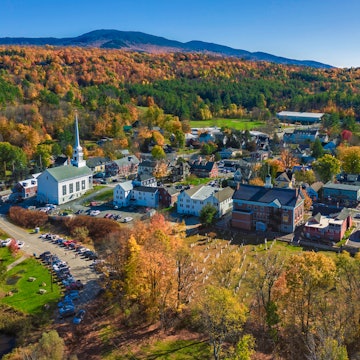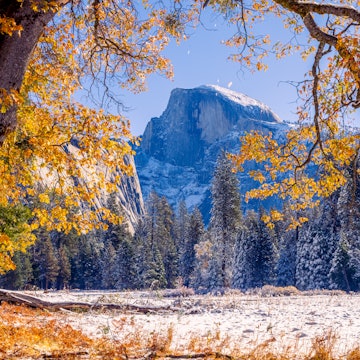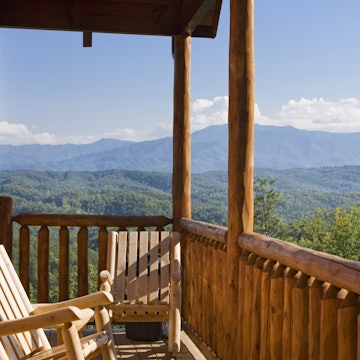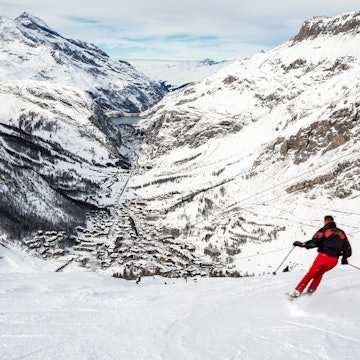
The best whitewater rafting in West Virginia (and where to get wet and wild)



West Virginia's rivers lure rafting enthusiasts from all over the world © Richard I'Anson / Getty Images
Fans of whitewater rafting are spoiled for choice in the US, but some of the wildest – and most accessible – river rapids in the country surge through the green countryside of West Virginia, fed by the forested uplands of the Appalachian Mountains.
The New River and Gauley River are legendary in whitewater rafting circles for their boiling, churning Class IV and Class V rapids, with numerous places to put-in within easy striking distance of the state capital, Charleston. But if you’re a city mouse rather than a natural born river rat, it might be hard to understand your options.
Do you pick the New River Gorge or the Gauley River? How many miles do you need to cover, and where are the best places to put-in? When is the best time to raft, and how do you choose a reputable rafting company? Here’s what you need to know to arrange a safe, fun-filled and thrilling rafting trip in West Virginia.
An introduction to whitewater basics
Before we get started, let’s talk about whitewater. Around the world, rapids are classified on a scale of I to VI, based both on how difficult they are to navigate, and how dangerous they are. Like any rating system, this is somewhat subjective, and the thrill and risk of any section of whitewater can also vary depending on water volume. This means that rapids are not always as consistently difficult (or as easy!) as their rating might suggest.
However, ratings do give a benchmark for what to expect. Class I means moving water and a few small ripples, while Class VI is full-on Niagara Falls (and beyond the scope of commercial rafting operations). If you go rafting with a commercial operator, Class V rapids are the wildest water you're likely to encounter, and there's plenty of it in West Virginia. The state also has plenty of Class IV rapids – still thrilling, but not quite as challenging as Class V water – as well as miles of gentler rapids for families and nervous first-timers.
Higher-rated sections of river require expert navigation and advance scouting. If you fall out of your raft on a Class V – or ‘go swimming,’ as whitewater guides euphemistically term it – there’s a serious risk of injury, so you'll need protective gear (a life vest, helmet and wet suit are usually the minimum requirements).

When to raft the rivers of West Virginia
West Virginia has two main rivers that are spoken about in hushed tones by fans of whitewater rafting – the New River near Fayetteville and the wilder Gauley River near Summersville. Both are easily accessible from Charleston by road within a few hours, via the I-64, US 60 and US 19 highways. We'll say more about these wonderful rivers later.
The West Virginia rafting season typically runs from May to September, with some of the best whitewater in the fall, when water is released from state reservoirs. May sees smaller crowds because of the colder weather, but spring rain in the mountains can deliver some impressive waves. As things warm up, the crowds gather; come at the start of the season to avoid bottlenecks and competition for accommodation.
The best time to run any part of the Gauley is during ‘Gauley Season’ – the six-week period in September and October when water is released from Summersville Lake through the Summersville Dam, raising the waves on the Gauley to epic levels.
Read more: The ultimate Appalachian road trip through West Virginia

The New River is best for novices and families
It might sound odd to suggest easing your way into rafting in West Virginia with a river that contains Class IV rapids, but the New River – which rises in the Blue Ridge Mountains and meets the Gauley River near the town of Gauley Bridge – has long stretches of relatively calm water. The river passes through the scenic New River Gorge National Park & Preserve, and many sections are perfect for peaceful floating and swimming. Rafting here is a great compromise option for people who want to experience the thrill of whitewater rafting but also fit in some relaxing moments.
The New River is one of the oldest rivers in the world, dating back at least 65 million years, and it winds through an ancient gorge whose bedrock is rich in coal seams. In the late 19th and early 20th century, more than 50 mining towns lined the river’s banks. Today, these lie in ruins, mostly buried by the greenery that has reclaimed the gorge, although a few buildings and bridge foundations can be spotted by keen-eyed rafters.
The Upper New is the quieter stretch of the river. Even those deterred by the full rafting experience can rent a ‘ducky’ (inflatable kayak) to navigate the modest and widely spaced rapids on this part of the New River. Some people also navigate the river on stand-up paddle boards, though kayaks are arguably better suited to whitewater conditions.
The Lower New is the most popular portion of the New River for rafting. It has bigger rapids (rising up to Class IV) and more thrills, but it still offers breaks from the thundering whitewater. On quieter sections, you can body-surf on gentle Class I rapids, or clamber onto raised rocks and make dizzying leaps into the clear, cold water.
Spring is the highest water-flow season for the New River, so trips at this time of year are rougher and more challenging; some of the Class IV rapids become Class IV+ – serious water that is best reserved for people with previous rafting experience.

For bigger thrills and spills, aim for the Lower Gauley
One step up from the New River on the difficulty scale is the Lower Gauley, the gentler section of the Gauley River, which rises in Monongahela National Forest and meets the New River at Gauley Bridge. This 15-mile stretch of river contains at least 25 named rapids, but they’re fairly well spaced and only three are wave-drenched Class Vs.
In case you think that means you can sit back and enjoy the view, let's just say that the ‘Heaven Help You’ and ‘Pure Screaming Hell’ rapids are aptly named. The latter, the final Class V on the Gauley, involves a long paddle through three big waves before dropping into the so-called ‘Hell Hole,’ a churning cauldron of water that just might swamp your boat.
Navigate this final rapid successfully and you’ll want to celebrate with a group ‘paddle high-five’ – one of the best things about whitewater rafting here is the sense of camaraderie with the friends (or strangers turned friends) who have paddled alongside you.
The Lower Gauley also features one of the most beautiful rock formations along the Gauley Canyon – the so-called Canyon Doors, two red sandstone cliffs demarcated by gulches filled with green vegetation. Unfortunately, you won’t be able to stop and take a photo; the Class III Canyon Doors rapid roars along in front of them, and you’ll have to paddle hard to avoid being marooned on a smooth shelf of rock.

Head to the Upper Gauley for a serious thrill ride
The Upper Gauley is one of the wildest rides you can take in a raft anywhere in the world. The rapids come fast and furious as the elevation of the river drops more than 300 feet over the space of 10 miles. Pair that with a pounding current and the water resembles bubble-filled blown glass, even in the sections where it isn't white.
Lost Paddle, a Class V rapid, has four distinct sub-rapids over its quarter-mile length. You’ll need to keep a firm hand on your paddle’s T-grip while you move through them – while ‘going swimming’ is the most serious rafting hazard, more rafting injuries are caused by T-grips gone rogue, bruising lips and even taking out teeth.
One of the most dramatic spots on the Upper Gauley is the Class V known as Pillow Rock, where the river narrows and drops nearly 30ft, intensifying the water speed and necessitating some split-second shifts of weight and fine adjustments from the person at the helm, as well as some seriously coordinated paddling from the crew.
If your guide tells you ‘forward four,’ you’d best paddle exactly four strokes, even if the fourth stroke has to be aimed directly into a wall of whitewater. This section of the Gauley Gorge can be accessed by hikers, so on weekends, you’ll find locals picnicking on the rocks and cheering (or heckling) the rafters and kayakers navigating the rapids.

How to arrange a rafting trip on the New River or Gauley River
While it’s possible to take an independent trip on both the New and the Gauley with your own raft or kayak, this requires some serious experience. Class IV and V rapids are extremely difficult to navigate even with an expert at the helm, and most rafters come on organized trips, especially on the Lower New and the Gauley. Note that tour operators will generally not take children under 12 on the Lower New, or children under 15 on the Gauley.
Choosing a rafting company
There are numerous rafting operators on the New River and Gauley River, many offering accommodations as well as rafting trips, and the industry is well regulated, with strict standards required of rafting companies. Choosing a company will boil down to a mixture of price, departure schedules and recommendations from other travelers.
Adventures on the Gorge leads guided trips on both the New and the Gauley throughout the season, including overnight trips and the ‘Double Gauley,’ which takes you down the Upper Gauley twice in one day (not a booking for the faint-hearted). Their expansive compound near Fayetteville has stunning views of the New River Gorge Bridge and a variety of accommodations, from simple bunk beds and campsites to luxury cabins with Jacuzzis.
Where to stay in West Virginia
If your rafting company doesn't have its own accommodations, there are hostels, hotels and B&Bs dotted around Fayetteville and Summersville. Another attractive option is the lodge at Hawks Nest State Park, just north of Fayetteville along the New River. Primitive camping is also possible at several sites along the New River and Gauley River.
You may also like:
The ultimate Appalachian road trip through West Virginia
West Virginia’s most charming mountain towns
The 6 best hikes in West Virginia
Trisha Ping traveled to West Virginia with support from Adventures on the Gorge. Lonely Planet contributors do not accept freebies in exchange for positive coverage.















